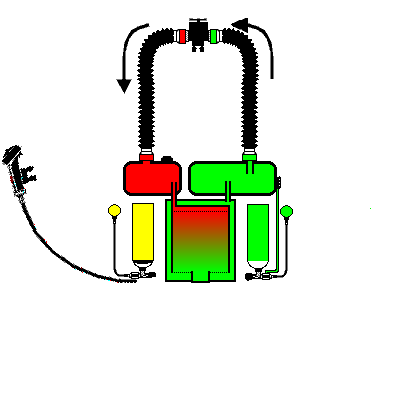
Skaphander
The Prelimary
of any modern Rebreather is just a Bag that is operated as Counterlung. This system was already in use more than 2000 years ago. The trick is quite simple: breathing is stimulated by stress and CO2, fainting by lack of Oxygen. So itīs easier to breath into and from a bag than to stop breathing the same time although it does not really prolong the Oxygen. Breathing from the Live-Jacket, rebreathing and changing the gas any 4th breath was (by principle) the next step. This could prolong 100barl to last up to 10minutes (depends on depth, training etc.).Classical Helmet-Diving works just the same way: the pump on the surface brings down enough bar*l air to give the diver enough Oxygen to preserve fainting, the divesuit is also in function as counterlung, and sometimes a wet flannel towel with tartar (Potassiumhydrogentartrat = Kaliumhydrogentartrat) already acts as CO2 Absorber ("scrubber").
